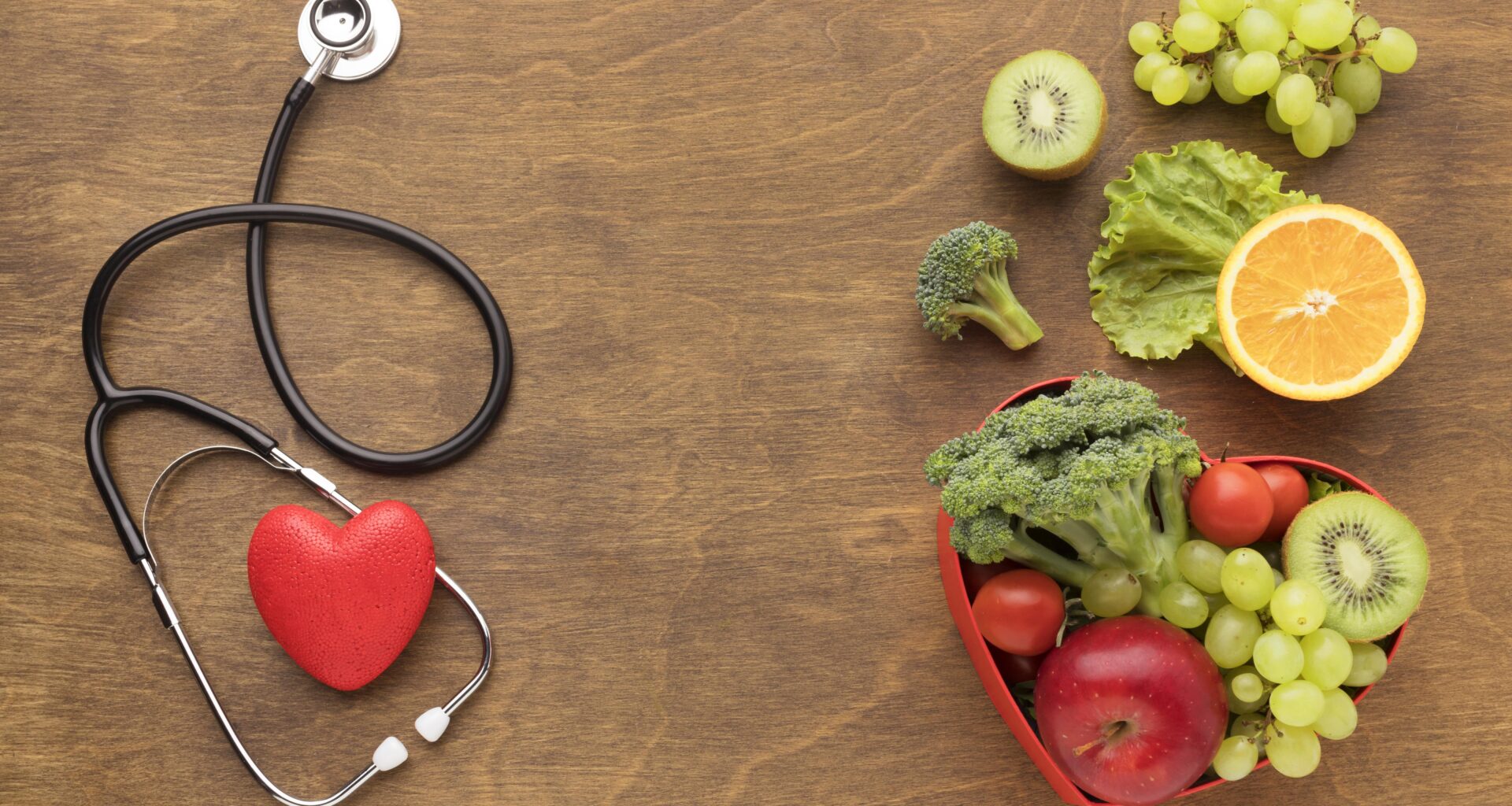Hypertension, commonly known as high blood pressure, has catastrophic implications, including heart disease and stroke, and is a major global health concern. The DASH diet (Dietary Approaches to Stop Hypertension) is one potential strategy for efficiently controlling hypertension.
This blog explores the DASH diet’s intricacies, from its fundamental concepts to its potential implications on blood pressure and overall cardiovascular health.
Read More: Benefits of Intermittent Fasting
The DASH Diet: What Is It?
The DASH diet was intended to help treat and prevent hypertension. The primary goal is to reduce salt consumption while promoting a balanced intake of key nutrients such as potassium, calcium, and magnesium. The emphasis is on a variety of nutrient-dense and heart-healthy foods, including fresh produce, lean meats, and whole grains.
DASH Diet for Hypertension
The DASH diet, also known as the Dietary Approaches to Stop Hypertension, is an effective weapon in the fight against hypertension, a serious global health concern. The DASH diet offers a comprehensive approach to blood pressure management and has been thoroughly studied. Its primary objective is to encourage a nutrient-dense eating pattern that prioritises vital minerals like potassium, calcium, and magnesium.
Numerous studies have consistently demonstrated a beneficial correlation between decreased blood pressure and the DASH diet. By emphasising meals high in potassium, vasodilation is encouraged, which relaxes blood vessels and counteracts the hypotensive effects of salt on blood pressure. Beyond lowering blood pressure, the DASH diet’s full nutritional makeup affects alterations in cholesterol levels and overall cardiovascular health.
The DASH diet offers individuals a proactive, long-term approach to enhance their cardiovascular health in addition to being an efficient method for controlling hypertension. By making dietary decisions that are consistent with its principles, people can significantly lower their risk of hypertension and support long-term heart health.
Read More: Intermittent Fasting 101
How to Start DASH Diet
Understanding the Basics
Make sure you understand the basics of the DASH diet before you start following it. Appreciate foods that are rich in nutrients, particularly those that are rich in magnesium, potassium, and calcium. If you want to manage your blood pressure well, you must understand the balance of these components.
Evaluating Your Present Diet
Make a mental note of your current eating habits. Find out what needs fixing, and then start swapping out unhealthy options for DASH-friendly ones. One way to achieve this goal is to pay closer attention to the salt content of the foods you typically buy by reading nutrition labels.
Eat More Fruits and Vegetables
Eat more fruits and vegetables every day. Strive for a rainbow of colours to guarantee a full complement of nutrients. Make sure to include a serving of fruit or vegetables with every meal; they should be a prominent component of your plate.
Opt for entire Grains
Say goodbye to refined grains and hello to entire grains. For more fibre and long-lasting energy, go for whole grains like quinoa, oats, brown rice, and wheat. This is an important part of the DASH diet for hypertension that helps keep your heart healthy.
Pick Lean Proteins
Watch what you eat for protein. Eat plenty of nuts, lean proteins, lentils, and poultry. These substitutes supply essential nutrients without the saturated fats that are present in red meat.
Sodium Reduction Made Easy
Limit the amount of salt you eat. You should cut back on processed foods as they tend to be high in salt. If you want to enhance taste without adding too much salt, use fresh, whole ingredients and try different herbs and spices.
Get Your Snacks and Meals Ready
This ensures that you have access to a wide variety of healthy foods and also helps you maintain your adherence to the DASH diet. To make your daily eating habits easier, think about creating batches of meals that are DASH-friendly.
Remind Yourself to Stay Hydrated
The DASH diet stresses the importance of drinking enough water. The body’s natural operations and general well-being are both aided by water. Stay hydrated all day long and cut back on sugary drinks.
Read More: Hydration And Weight Loss
Is DASH Diet Really Effective?
The DASH diet is one of the most successful dietary strategies for the control of hypertension, since several studies have shown its outstanding efficiency. Repeated research has demonstrated its usefulness in enhancing cardiovascular health and reducing blood pressure.
One of the reasons why the DASH diet for hypertension is so successful is because it promotes a balanced diet that is rich in nutrients. By emphasising the importance of a diet rich in fruits and vegetables, whole grains, lean proteins, and a reduced sodium intake, the DASH diet aims to reduce blood pressure. The vasodilatory effects of potassium-rich meals counteract the hypertensive effects of salt by relaxing blood vessels.
The DASH diet successfully reduces systolic and diastolic blood pressure, according to the research. Reducing cholesterol is one of the many positive impacts of the diet that reduces the danger of cardiovascular disease and stroke.
Read More: Nutrient Absorption
Conclusion
Dietary Approaches to Stop Hypertension, or DASH diet, is a reliable and well-researched strategy for managing hypertension. Its emphasis on a well-balanced, high-nutrient diet with less salt intake has been demonstrated to be a successful strategy for lowering blood pressure. The DASH diet is good for heart health in general and for reducing hypertension in particular, as research has shown time and again. Additionally, it decreases cholesterol and generally strengthens the heart.
Because it is practical and adaptable, the DASH diet for hypertension can be a long-term solution for anyone looking to enhance their cardiovascular health. By incorporating a range of food groups, emphasising whole, fresh foods, and adopting small dietary adjustments, people can see noticeable changes in their blood pressure and overall health.
The DASH diet offers a long-term answer as opposed to a temporary one, making it a helpful guide for navigating the complex world of health and nutrition. In addition to treating hypertension and promoting a complete approach to heart health, adopting the principles of DASH diet for hypertension enables people to take proactive steps toward a healthier and more resilient circulatory system.
FAQs
For hypertension, it’s advisable to limit or avoid foods high in sodium, saturated fats, processed sugars, and excess alcohol intake.
The DASH diet (Dietary Approaches to Stop Hypertension) is often recommended for managing hypertension. It emphasizes fruits, vegetables, whole grains, lean proteins, and low-fat dairy while minimizing salt intake.
Eggs are generally considered a healthy protein source and are not directly linked to increasing blood pressure. However, for individuals with hypertension, it’s recommended to monitor overall dietary cholesterol intake and consult with a healthcare provider regarding egg consumption.





